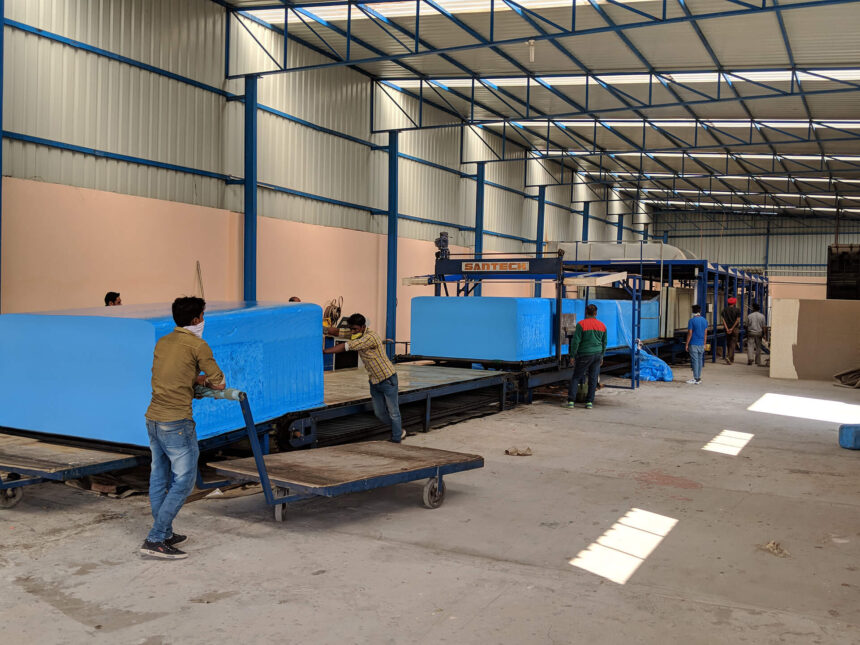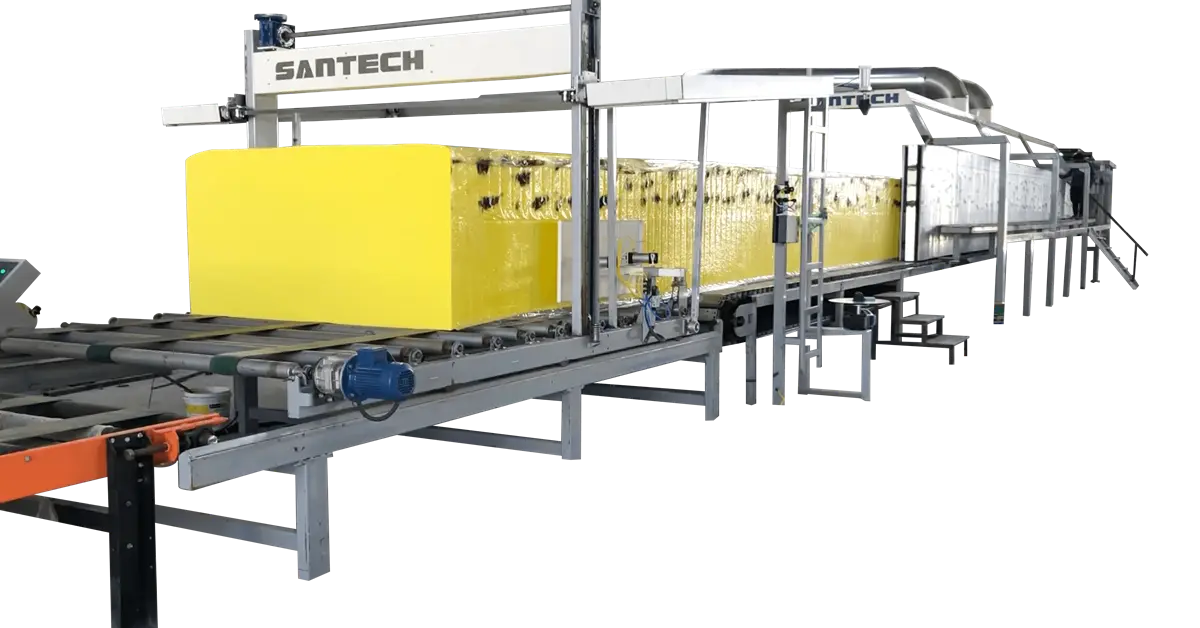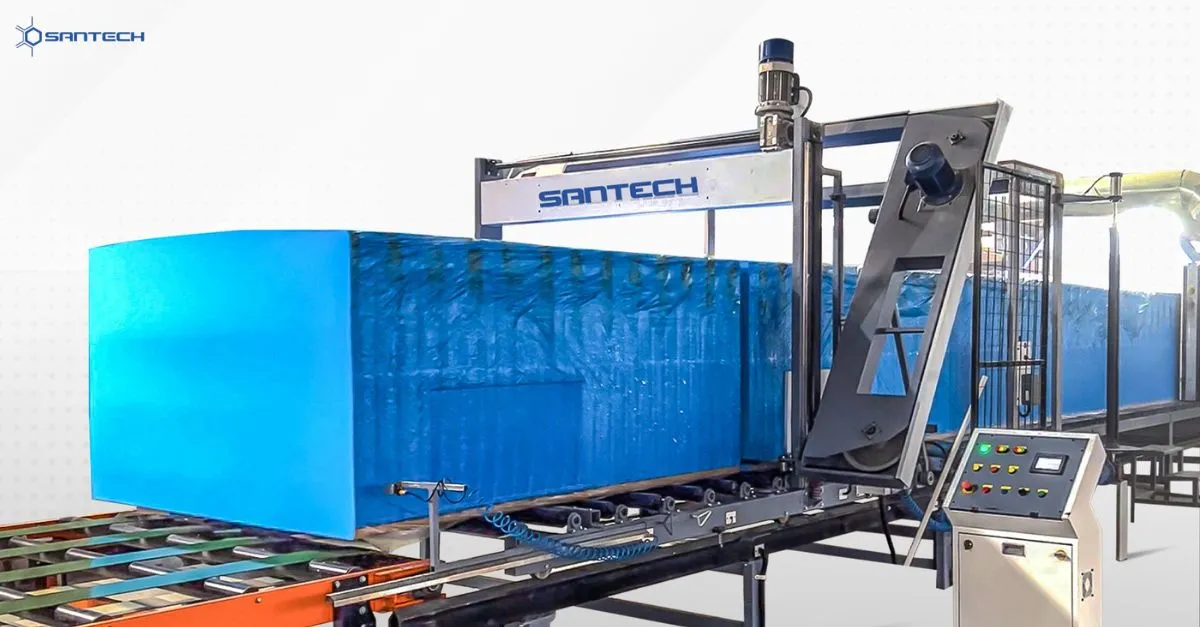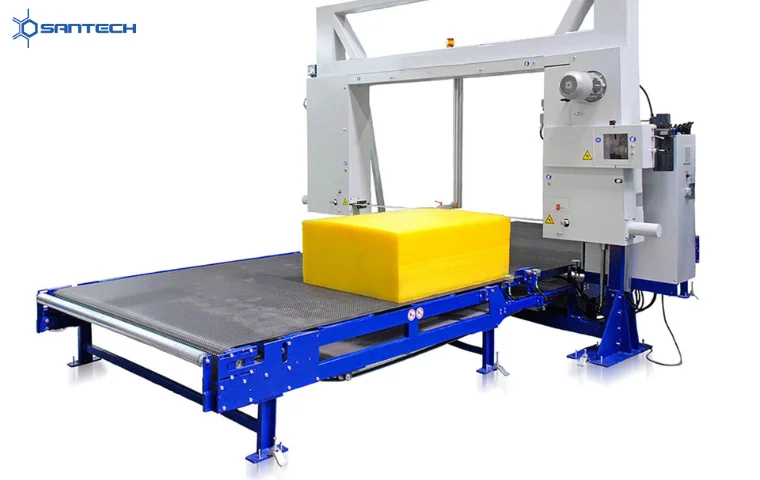Due to its outstanding heat insulation qualities, PU foam is often used in various industrial applications. Moreover, due to its versatility, PU foam can be moulded into unusual shapes, increasing its use in industrial and consumer goods. Its high requirement and wide range of applications raise the demand for its manufacture. It is challenging to precisely cut high-density foam to create sheets of different thicknesses.
The horizontal foam-cutting machine facilitates this. High-density foam is cut using it into a range of complicated shapes, slices, blocks, as well as sheets. Depending on the need, these cutting machines are available in a variety of sizes and shapes. Which machine will work best according to your demands depends on the product and the foam’s thickness. In this complete blog post, you will explore the amazing benefits of using horizontal-form machines. Let us have a look.
Understanding Horizontal Foam Cutting Machines
Horizontal foam cutting machines are specialised equipment designed to accurately cut foam blocks or sheets. Unlike vertical machines that cut from the top, horizontal machines move a blade horizontally across the foam material. This unique approach offers several advantages, making them an attractive choice for foam-cutting machine manufacturers. Let us now explore its countless benefits.
Advantages Of Using Horizontal Foam Cutting Machines
These machines have numerous benefits for foam manufacturers in creating foams. Let us see how:
1. Precision Cutting
- Horizontal cutting machines utilise a cutting blade that moves smoothly and accurately along the foam material.
- The controlled horizontal movement ensures that each cut is consistent, resulting in foam components with uniform dimensions.
- In industries like automotive manufacturing, where foam components need to fit perfectly, the precision offered by these machines is priceless.
- The oscillating blade (a blade that has an unlimited twist ability) technology further enhances precision by reducing friction and resistance during the cutting process, resulting in clean and sharp cuts.
2. Efficiency In Production
- Horizontal foam-cutting machines optimise production processes by minimising rest and rework.
- Unlike vertical machines that require foam blocks to be moved for each cut, horizontal machines enable continuous cutting in a single pass.
- This continuous cutting process significantly reduces production time, leading to higher output and faster delivery of finished products.
- For manufacturers dealing with high-demand industries like bedding and furniture, the efficiency gained from horizontal machines can make a substantial difference in meeting customer orders.
3. Versatility In Applications
- A game-changer is how easily horizontal foam-cutting machines can accommodate different foam types, densities, and thicknesses.
- Manufacturers can make foam products for various uses, such as beds, pillows, packaging fillers, and soundproofing materials.
- For designers and engineers, the ability to deal with various foam kinds opens up more creative possibilities, allowing them to innovate and create new products that address certain market needs.
4. Consistent Quality
- The precision of horizontal cutting machines translates into foam components that fit seamlessly together.
- In industries such as medical equipment manufacturing, where precision is critical for patient comfort, these machines ensure that foam padding and support elements are accurately cut.
- Consistent quality is aesthetically pleasing and contributes to the end products’ functionality and durability.
5. Reduced Material Waste
- The accurate cutting capabilities of horizontal foam cutting machines result in minimal material waste.
- Manufacturers can optimise the placement of foam blocks, reducing the amount of excess foam that needs to be trimmed.
- This reduction in waste has economic and environmental benefits, as less foam material ends up in landfills, and the cost of raw materials is better utilised.
6. Time And Cost Savings
- Horizontal cutting machines offer time-saving advantages by reducing the number of cutting cycles required for large foam blocks.
- With fewer cutting cycles, manufacturers can achieve higher production rates without compromising quality.
- Additionally, the reduced need for manual interference and repositioning means that labour costs are optimised, and energy consumption is minimised.
7. Complex Designs Made Easy
- The oscillating blade technology in many horizontal foam-cutting machines allows manufacturers to achieve entangled and complex foam designs.
- In the furniture industry, for example, customised upholstery with detailed patterns and shapes can be easily produced using these machines.
- The ability to create visually appealing as well as unique designs opens up new avenues for product differentiation and market competitiveness.
8. Enhanced Automation
- Modern horizontal cutting machines come equipped with advanced automation features.
- These features include programmable cutting patterns, touch-screen interfaces, and the
- ability to store and recall different cutting profiles.
- Automation not only streamlines the production process but also reduces the potential for mistakes caused by human interference, contributing to a more consistent as well as reliable output.
Wrap Up
Horizontal foam cutting machines have become the backbone of foam manufacturing, offering a combination of precision, efficiency, and versatility that transforms the industry. Manufacturers across various sectors or industries can benefit from their ability to produce high-quality foam products with reduced waste and increased speed. As these machines evolve alongside technology, the potential for further enhancements and innovations is exciting. Adopting horizontal foam-cutting technology positions manufacturers for success in an ever-evolving market.




